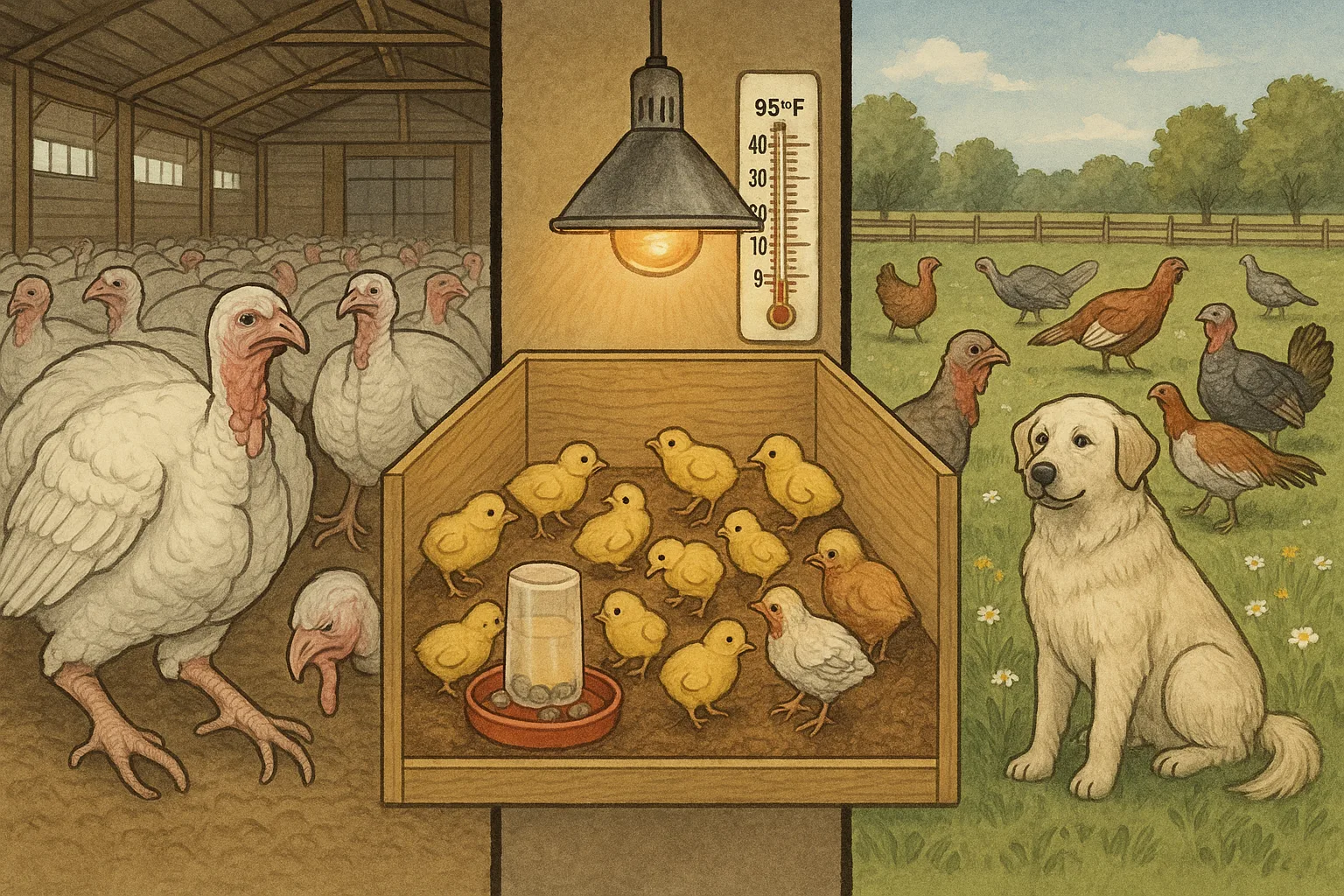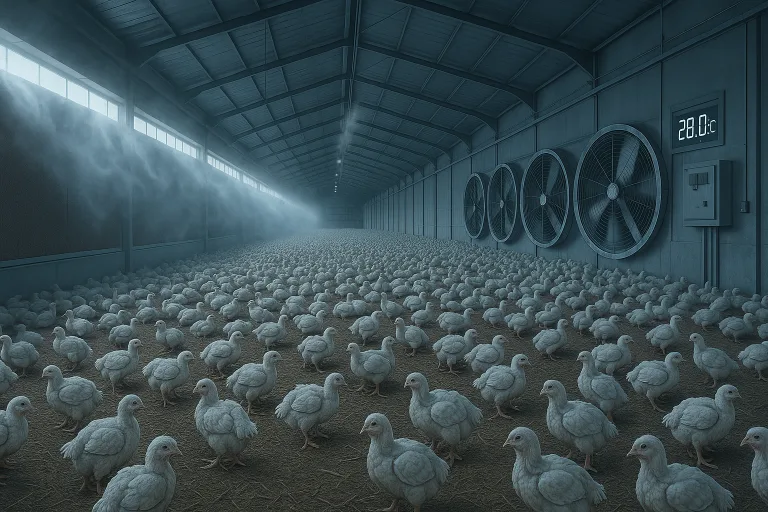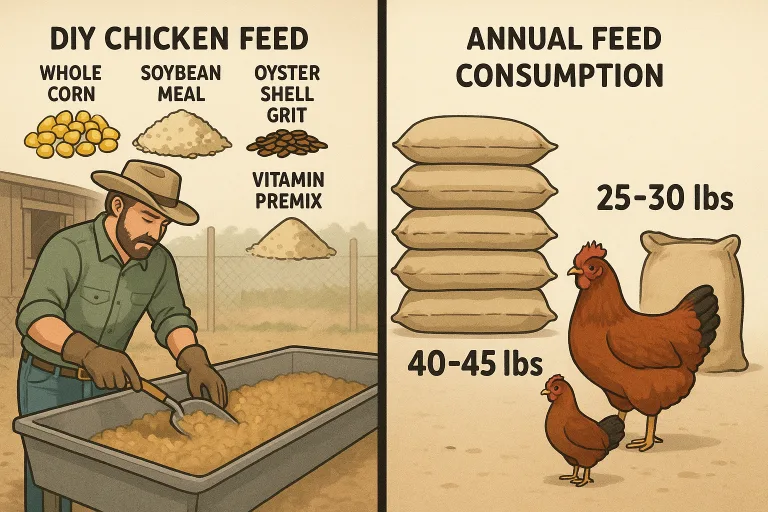The Comprehensive Guide to Small-Flock Turkey Production: From Poult to Profit

In an era defined by climate uncertainty, antibiotic resistance, and consumer demand for transparency, small-flock turkey production has emerged as a beacon of regenerative agriculture. With fewer than 250 birds per flock, these operations are not just farms—they are living laboratories of biodiversity, animal welfare, and local food sovereignty.
While industrial turkey farming produces over 200 million birds annually in the U.S., dominated by the Broad-Breasted White, it comes at a steep ecological and ethical cost: high antibiotic use, genetic uniformity, and compromised meat quality. In contrast, small-flock producers are reclaiming the narrative—raising heritage breeds on pasture, selling directly to conscious consumers, and preserving centuries-old genetics that were nearly lost to agribusiness consolidation.
Since 2020, demand for heritage turkeys has grown by 15% annually, driven by foodies, chefs, and families seeking authentic, flavorful meat with a story behind it. These birds command premium prices—up to $11/lb—and open doors to value-added products like smoked sausages, jerky, and bone broth, creating year-round revenue streams beyond the Thanksgiving rush.
This guide is your blueprint for turning a backyard or small acreage into a profitable, sustainable turkey enterprise. We’ll walk you through every stage—from selecting poults to processing and marketing—with science-backed protocols, real-world economics, and strategies to overcome common pitfalls.
I. Breed Selection: Matching Genetics to Goals and Markets
Choosing the right breed is the foundation of success. Your decision impacts growth rate, feed efficiency, flavor profile, reproductive viability, and market appeal.
A. Commercial vs. Heritage Breeds: A Tale of Two Turkeys
1. Broad-Breasted White (BBW) – The Industrial Standard
- Market Share: 90% of commercial turkey production.
- Growth Rate: Exceptionally fast—toms reach 36 lbs in 17 weeks, hens 20 lbs in 14 weeks.
- Feed Conversion: Outstanding at 2.5:1 (pounds of feed per pound of gain).
- Use Case: Ideal for high-turnover, confinement systems targeting volume sales.
- Limitations:
- Cannot reproduce naturally due to massive breast size; requires artificial insemination.
- Prone to leg disorders, heart failure, and respiratory issues.
- Poor foragers; dependent on complete feeds.
- Low genetic diversity increases disease vulnerability.
- Often rejected by niche markets focused on “slow food” or ethical farming.
Best for: Farmers prioritizing efficiency, lower startup costs, and short production cycles.
2. Heritage Breeds – Guardians of Genetic Legacy
Recognized by the American Livestock Breeds Conservancy (ALBC), heritage turkeys meet strict criteria:
- Must be able to mate naturally.
- Must have a long productive lifespan (2+ years).
- Must grow slowly, reaching market weight in 6–9 months.
Popular Heritage Breeds:
| Breed | Characteristics | Foraging Ability | Market Appeal |
|---|---|---|---|
| Bourbon Red | Rusty red plumage; calm temperament | High | Excellent (colorful, historic) |
| Narragansett | Gray-blue feathers; excellent mothering instincts | Very High | Strong (Northeast favorite) |
| Royal Palm | Striking black-and-white patterning | Moderate | Niche (show birds + meat) |
| Standard Bronze | Classic “old-fashioned” look | High | High (symbolic of Thanksgiving past) |
| Spanish Black | Rare, iridescent green sheen | High | Premium (rarity = exclusivity) |
- Advantages:
- Superior foraging ability reduces feed costs by up to 64% when pasture-raised.
- Greater disease resilience due to diverse immune genetics.
- Richer, deeper flavor profile—chefs prize their complex taste.
- Eligible for certifications (e.g., Certified Humane, Animal Welfare Approved).
Best for: Farmers committed to sustainability, breed conservation, and direct-to-consumer branding.
B. Growth Comparison: Broad-Breasted White vs. Heritage
| Age (Weeks) | BBW Tom (lbs) | Bronze Hen (lbs) | Heritage Avg (lbs) |
|---|---|---|---|
| 10 | 12.7 | 12.1 | 6.0 |
| 14 | 25.2 | 19.9 | 10.5 |
| 18 | 39.4 | 26.7 | 15.8 |
Note: Heritage birds take 2.5x longer to reach market weight but offer higher profit margins due to pricing power.
C. Sourcing Poults: Quality Matters
Key Criteria for Hatchery Selection
- NPIP Certification: Ensures testing for Salmonella pullorum, fowl typhoid, and Mycoplasma (PPLO).
- Hatch Date Flexibility: Order 6–8 weeks in advance; many heritage hatcheries sell out by January.
- Health Guarantees: Reputable hatcheries offer refunds for dead-on-arrival (DOA) poults.
Poult Pricing (2025 Estimates)
| Breed Type | Price per Poult | Notes |
|---|---|---|
| Broad-Breasted White | $8–$12 | Widely available; shipped via USPS |
| Heritage (Bourbon Red, Narragansett) | $12–$20 | Limited availability; consider joining waitlists |
| Rare Breeds (e.g., Auburn, Slate) | $20–$30+ | Sold through specialty breeders; ideal for collectors |
💡 Pro Tip: Join the Livestock Conservancy’s Breeder Network or Heritage Turkey Foundation for access to rare stock and mentorship.
II. Brooding Mastery: The Critical First 6 Weeks
The first month determines survival, growth trajectory, and long-term health. Without proper brooding, poult mortality can reach 40–60%—a devastating loss.
A. Environmental Control: Heat, Humidity, and Litter
Temperature Management
- Week 1 (Days 0–7): 95°F under heat source (lamp or plate), ambient room temp 88°F.
- Reduce by 5°F weekly until reaching 70°F at Week 6.
- Use infrared thermometers to monitor chick surface temperature (ideal: 102–103°F).
Signs of discomfort:
- Huddling: Too cold
- Spread out at edges: Too hot
- Uniform distribution: Just right
Heat Sources
| Type | Pros | Cons |
|---|---|---|
| Red Heat Lamps | Inexpensive, widely used | Fire risk; energy inefficient |
| Brooder Plates (e.g., EcoGlo) | Safer, mimics mother hen | Higher upfront cost ($150–$300) |
| Radiant Heaters | Even heat; no light disturbance | Requires installation |
Litter Management
- Avoid sawdust: Fine particles cause gastrointestinal impaction if ingested.
- Recommended bedding:
- Pine shavings: Absorbent, low dust, biodegradable.
- Peat moss: Superior moisture control; ideal in humid climates.
- Straw: Use only if dry and chopped; prone to mold.
- Depth: 3–5 inches.
- Maintenance: Remove wet spots daily; stir litter twice daily to prevent caking.
Humidity: Maintain 50–70% RH. Dry air causes dehydration; damp air promotes respiratory disease.
B. Behavioral Interventions: Teaching Poults to Thrive
Poults don’t instinctively know where to eat or drink. You must teach them.
1. Prevent Piling (Suffocation Risk)
- Use round corners in brooder pens (cardboard circles or plastic walled rings).
- Keep light levels low (5 lux max)—bright lights cause panic and clustering.
- Install overhead fans for gentle air movement (reduces CO₂ buildup).
2. Stimulate Feeding & Drinking
- Beak Dipping: Gently dip each poult’s beak into water and crumble feed upon arrival.
- Marbles in Waterers: Reflect light and attract curiosity—poults peck at them and discover water.
- Paper Feeders: Place starter feed on kraft paper for first 48 hours to encourage scratching and eating.
- Add “Biddies”: Introduce 2–3 chicks to demonstrate feeding behavior (remove after 1 week).
3. Vocalization Training
- Play recorded hen calls for first 3 days to reduce stress and improve orientation.
- Avoid loud noises—poults have sensitive hearing.
C. Space Requirements and Density Guidelines
| Age | Density (sq ft/bird) | Feeder Space (inches/bird) | Waterer Space (inches/bird) |
|---|---|---|---|
| 0–6 weeks | 1.0 | 1.0 | 0.5 |
| 6–14 weeks | 2–3 | 3.0 | 1.0 |
| Market Age | 3–5 | 3.0 | 1.0 |
Overcrowding leads to pecking, disease, and poor growth.
III. Housing & Ventilation Engineering: Beyond the Coop
Your housing system defines biosecurity, welfare, and profitability.
A. System Comparison: Free-Range vs. Confinement
| Feature | Free-Range | Confinement |
|---|---|---|
| Stocking Density | ≤250 birds/acre | 3–4 sq ft/bird |
| Feed Cost | ↓ 30–64% (pasture utilization) | ↑ Full feed dependence |
| Predation Risk | Up to 30% loss (foxes, hawks, raccoons) | Minimal |
| Disease Risk | Higher (wild bird contact) | Lower (controlled environment) |
| Labor | Higher (move pens, guard animals) | Lower |
| Market Premium | +20–50% | Standard pricing |
| Best For | Heritage breeds, pasture-based farms | High-density, rapid turnover |
Hybrid Option: Rotational Pasture with Mobile Tractors (e.g., chicken tractors modified for turkeys). Allows pasture access while protecting from predators and weather.
B. Ventilation Science: Invisible but Vital
Poor ventilation kills more turkeys than any predator.
Key Thresholds
- Ammonia (NH₃): >10 ppm damages cilia in respiratory tract → increased susceptibility to E. coli and Mycoplasma.
- Carbon Dioxide (CO₂): >3,000 ppm causes lethargy and poor growth.
- Relative Humidity: >70% promotes mold and respiratory disease.
Ventilation Requirements
- Minimum Airflow: 0.2 CFM per poult (cubic feet per minute).
- At Market Weight: 0.5 CFM per pound of body weight.
- Static Pressure: Maintain 0.05”–0.08” for effective air mixing without drafts.
Winter Ventilation Strategy
- Goal: Remove moisture without chilling birds.
- Air Changes: 3–5 complete air exchanges per hour.
- Use Tunnel Vents with Controllers: Automate fan operation based on humidity and temperature.
- Insulate Ceilings: Prevent condensation and heat loss.
Tip: Hang a humidity strip and ammonia test badge inside the house for continuous monitoring.
IV. Nutrition & Feeding Economics: Fueling Flavor and Growth
Turkeys are not chickens. Their nutritional needs are distinct and demanding.
A. Phase-Specific Feeding Programs
| Phase | Age | Crude Protein | Key Nutrients | Notes |
|---|---|---|---|---|
| Starter | 0–8 weeks | 28% | Lysine (1.5%), Methionine (0.6%) | Critical for muscle development |
| Grower | 8–29 weeks | 20% | Balanced amino acids | Reduce protein to prevent leg issues |
| Finisher | 30+ weeks | 16% + energy-dense grains | Corn, oats, barley | Promote fat deposition for flavor |
❗ Never use chicken starter—turkeys require 30% more protein and specific amino acid profiles. Deficiency causes feather picking, stunting, and death.
Organic & Non-GMO Options
- Organic turkey feed costs $0.50–$0.75/lb vs. $0.25/lb for conventional.
- Justified in premium markets; label clearly: “Organic, Pasture-Raised, Heritage Turkey.”
B. Pasture Supplementation
- Turkeys consume 40–60% of diet from pasture when managed well.
- Ideal forages: clover, chicory, plantain, ryegrass.
- Insects: Provide essential protein—allow access to compost piles or fly traps.
Supplemental Feeding Tip: Use scatter feeding on pasture to encourage natural scratching behavior.
C. Feed Efficiency & Cost Analysis
| Breed | Feed Conversion Ratio | Avg. Feed to Market | Feed Cost ($/bird) |
|---|---|---|---|
| Broad-Breasted White | 2.5:1 | ~80 lbs | $18–$22 |
| Heritage | 4.0:1 | ~120 lbs | $35–$50 |
Even with higher feed costs, heritage birds yield greater net profit due to pricing power.
V. Health Defense System: Biosecurity as a Business Strategy
Prevention is cheaper than treatment. A single outbreak can wipe out a season.
A. Biosecurity Non-Negotiables
- Site Isolation
- Never raise turkeys on land where chickens were kept in the past 3 years.
- Reason: Chickens carry Histomonas meleagridis (blackhead disease), fatal to turkeys.
- Footbaths & Boot Changes
- Use iodine-based disinfectant at all entry points.
- Dedicate boots and coveralls to turkey area.
- Rodent & Wildlife Control
- Elevate feed bins; use rat-proof containers.
- Install bird netting over outdoor runs.
- Data shows: Flocks with wild bird access have 5× higher parasite loads.
- All-In/All-Out Management
- Raise one age group at a time.
- Allow 30-day downtime between flocks for deep cleaning and rest.
B. Vaccination Protocol
| Vaccine | Method | Timing | Purpose |
|---|---|---|---|
| Fowl Pox | Wing-web stab | 6–8 weeks | Prevents skin lesions, mortality |
| Newcastle Disease | Drinking water (live) | 4 & 8 weeks | Critical in high-risk areas |
| Turkey Rhinotracheitis (TRT) | Spray or water | 2–4 weeks | Prevents respiratory collapse |
Optional but recommended: Histomonas vaccine (experimental, available through specialty labs).
C. Deworming & Parasite Management
- Pasture-Raised Flocks: Deworm every 8 weeks with Levamisole or Fenbendazole.
- Rotate pastures every 3–4 weeks to break parasite lifecycle.
- Use diatomaceous earth in dust baths to reduce external parasites.
VI. Processing & Marketing Frameworks: From Farm to Feast
A. Regulatory Navigation: Know Your Limits
| Jurisdiction | Exemption | Details |
|---|---|---|
| Federal (USDA) | ≤20,000 birds/year | No federal inspection required; intrastate sales only |
| New York State | ≤250 birds/year | On-farm processing allowed; must follow NYS Ag guidelines |
| California (AB 1608) | ≤1,000 birds/year | Conditional exemption with recordkeeping |
| Roadkill Rule Exception | Varies | Some states allow custom-exempt processing for personal use |
✅ Always check with your state department of agriculture. Regulations change frequently.
B. Processing Options
- On-Farm Processing:
- Lower cost ($10–$15/bird vs. $30–$50 at facility).
- Requires investment in plucker, scalder, evisceration table.
- Best for ≤100 birds/year.
- Mobile Slaughter Units (MSUs):
- Travel to your farm; USDA-inspected.
- Growing in availability—search Local Meat Network or NCAT ATTRA.
- Third-Party Processors:
- Convenient but expensive; book 6+ months ahead for Thanksgiving.
C. Profit Maximization Strategies
1. Seasonal Premiums
- Thanksgiving (Nov): Peak demand.
- Broad-Breasted White: $4.50–$6.00/lb
- Heritage: $7.00–$11.00/lb
- Christmas & Easter: Secondary markets; promote as “gourmet holiday centerpiece.”
2. Year-Round Revenue Streams
| Product | Price Point | Notes |
|---|---|---|
| Smoked Turkey Breast | $12–$15/lb | Shelf-stable; great for delis |
| Turkey Sausage (herb, apple, jalapeño) | $10–$14/lb | Partner with local smokehouse |
| Bone Broth (frozen) | $12–$16/qt | Use carcasses; minimal input |
| Pet Treats (dehydrated organs) | $8–$10/lb | Tap into pet wellness market |
| Fertile Eggs | $5–$8/dozen | Market as “rare heritage breed” |
| Breeding Stock | $50–$100/pair | Sell to other small farmers |
💡 Value-Add Example: One 25-lb heritage tom yields:
- 12 lbs whole turkey ($132 @ $11/lb)
- 3 lbs smoked breast ($36)
- 2 lbs sausage ($28)
- 1 qt bone broth ($16)
- Organs for treats ($10)
Total Value: $222 (vs. $150 whole bird)
D. Marketing Channels
- Farmers Markets: Build relationships; offer samples.
- CSA Shares: “Turkey Add-On” to vegetable boxes.
- Online Store + Delivery: Use Shopify or Local Food Marketplace.
- Restaurant Partnerships: Supply farm-to-table chefs.
- Social Media: Share growth journey—#FromPoultToProfit.
VII. Emerging Challenges & Innovative Solutions
A. Predator Pressure
- Top Threats: Coyotes, foxes, raccoons, hawks, dogs.
- Solutions:
- Guardian Animals: Great Pyrenees, Anatolian Shepherds, or donkeys.
- Electric Netting: 42” height, powered by solar charger.
- Motion-Activated Lights & Alarms: Disrupt nocturnal predators.
- Nighttime Enclosure: Move birds into secure coops at dusk.
B. Urban & Suburban Zoning Conflicts
- 84% of urban poultry keepers report zoning violations.
- Solutions:
- Petition for Backyard Poultry Ordinances.
- Join city agriculture task forces.
- Advocate for livestock allowances under 5 birds.
C. Disease Amplification in Small Flocks
- Risk: One sick bird can infect all.
- Prevention:
- Quarantine new arrivals for 30 days.
- Implement all-in/all-out cycles.
- Keep detailed health logs (weight, feed intake, symptoms).
Conclusion: The Artisanal Poultry Revolution
Small-flock turkey production is more than farming—it’s cultural restoration, ecological stewardship, and entrepreneurial innovation rolled into one.
By choosing heritage breeds, mastering brooding science, and building direct relationships with customers, you’re not just raising turkeys. You’re reviving flavor, preserving genetics, and rebuilding local food economies.
Yes, it takes effort. But the rewards are profound:
- Net margins exceeding 60% on heritage birds.
- Resilient flocks that thrive on pasture.
- Customers who return year after year, not just for Thanksgiving, but for your smoked sausage, bone broth, and story.
Start Small. Scale Smart. Document Everything.
Begin with 25 birds. Track temperature, feed intake, mortality, and customer feedback. Let data—and the vitality of your poults—guide your expansion.
This isn’t just about profit. It’s about purpose. And in a world hungry for authenticity, your turkey could be the centerpiece of more than just a meal—it could be the spark of a movement.
Resources & Next Steps
Certifications & Networks
- National Poultry Improvement Plan (NPIP): www.aphis.usda.gov
- The Livestock Conservancy: www.livestockconservancy.org
- American Pastured Poultry Producers Association (APPPA): Networking, workshops, processing tips.
Books & Guides
- Storey’s Guide to Raising Turkeys (3rd ed.) – Gail Damerow
- The Small-Scale Poultry Flock – Harvey Ussery
- Pastured Poultry Profits – Joel Salatin (polyface farming model)
Suppliers
- McMurray Hatchery (NPIP-certified, heritage breeds)
- Pleasant Valley Hatchery (commercial and heritage)
- Koch’s Turkey Farm (breeding stock, rare breeds)
Tools to Download
- Flock Health Log Template (Google Sheets)
- Feed Cost Calculator
- Processing Checklist (On-Farm)
Final Thought:
The future of food isn’t in factories. It’s in backyards, pastures, and small farms where poults scratch in the dirt, farmers know each bird by sight, and dinner begins with a story.

